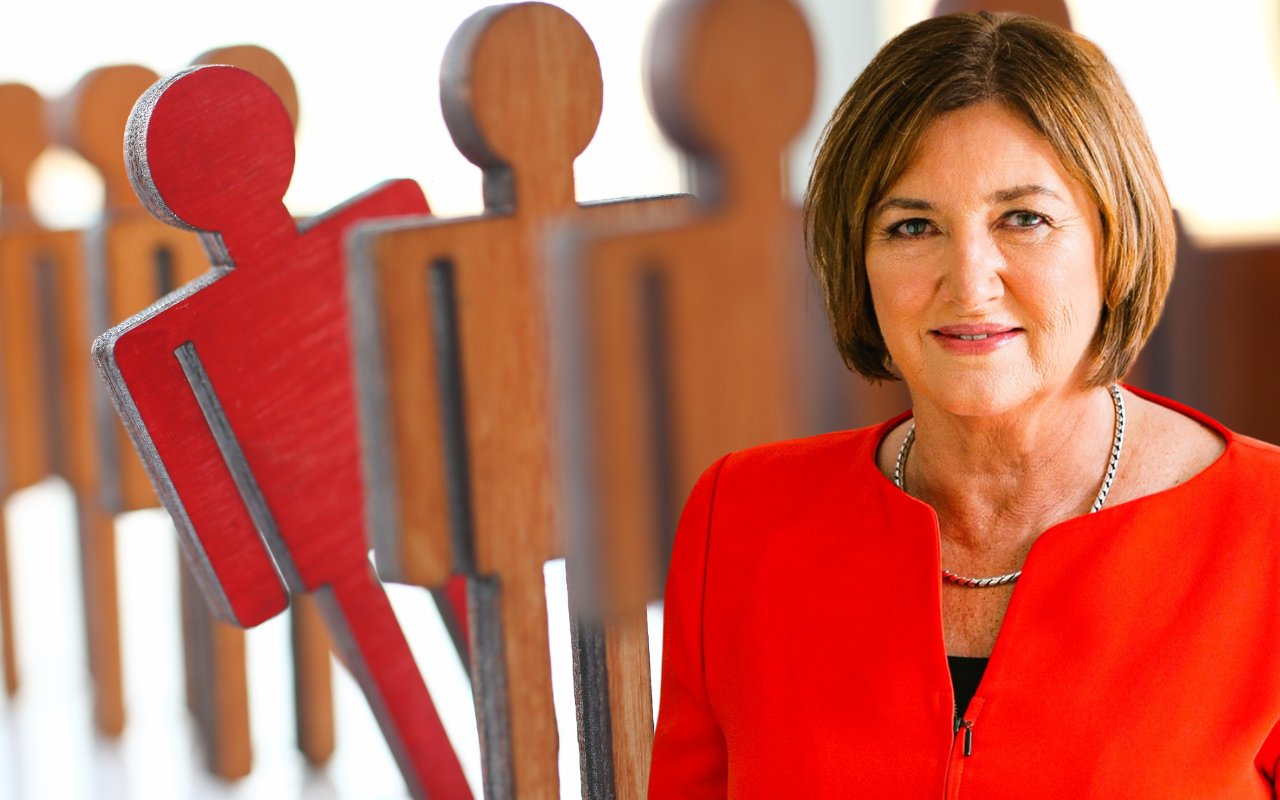Rare diseases have a huge impact on individuals, their families and society, and all doctors must be prepared to respond and help patients on their medical journey.
All doctors have vital roles to play in advocating for patients who may have a rare disease, including GPs who come across unusual symptoms and initiate a referral, paediatricians who may make the diagnosis, and other specialists who contribute to complex care.
Having an awareness of the range and common features of rare diseases is crucial to help Australians who have these conditions, about which much is unknown.
How rare is rare?
A rare disease is usually defined as one that affects fewer than five per 10 000 individuals in the general population. However, collectively, rare diseases are common. It is estimated that there are around 8000 different rare diseases (~80% of genetic origin), which affect 2 million Australians, including 408 000 children and adolescents under the age of 18 years.
Most rare diseases present in children, are complex, chronic, and require specialised multidisciplinary care.
Rare diseases are associated with disability, poor quality of life, and high mortality.

The causes of rare diseases are many and diverse
Although thousands of rare conditions are genetic in origin, they also include rare infections, rare complications of infections or exposures to toxins, rare injuries, rare mental health disorders and rare adverse responses to medications.
For some rare conditions the cause is unknown, although rapid advances in genetics, combined with the use of artificial intelligence, and neonatal screening programs now regularly lead to a definitive diagnosis.
Research into rare diseases is essential to inform policy and practice
Since 1993, the Australian Paediatric Surveillance Unit (APSU) has facilitated national case identification of rare childhood diseases through monthly, active surveillance and reporting by paediatricians (here).
Surveillance (as shown in Box 1) is complemented by hospital audits, systematic reviews, and studies on the impacts of rare diseases on families and services (here).
| Box 1. Rare conditions under surveillance by the APSU in 2023 |
| Rare communicable diseases: acute flaccid paralysis; congenital cytomegalovirus infection; neonatal herpes simplex virus infection; perinatal exposure to human immunodeficiency virus (HIV); paediatric HIV infection; juvenile onset recurrent respiratory papillomatosis; congenital rubella syndrome; congenital varicella syndrome; neonatal varicella infection; Japanese encephalitis; severe acute hepatitis; Q fever; and dengue fever |
| Genetic disorders: Septo-optic dysplasia |
| Rare complications of infectious diseases: Severe complications of seasonal influenza; multisystem inflammatory syndrome temporally associated with severe acute respiratory syndrome coronavirus 2 |
| Rare injuries: Severe injury related to disc battery ingestion; severe trampoline/jumping castle injury |
| Teratogen exposure: Fetal alcohol spectrum disorder |
| Rare conditions of unknown cause: Severe acute hepatitis of unknown origin |
Delays in diagnosis are common and health professional education is needed
Despite advances in public health policy and clinical practice, there is still the risk of delayed diagnosis. Delayed diagnosis may in part be due to lack of clinician knowledge and skills.
Paediatricians feel poorly trained in the recognition and management of rare diseases, even though many have their onset in childhood and comprise much of the case load in tertiary paediatric hospitals and specialist paediatric services.
Similarly, GPs want ready access to reliable, current information about how to approach an undiagnosed disease and where to refer for expert input on diagnosis and management.
Health professional education is thus crucial to address diagnostic delays and ensure optimal management and outcomes.
It is impossible, however, for clinicians to learn about every rare disease or anticipate who may present to their clinic.
Development of clear referral pathways and access to evidence-based resources about rare disorders are imperative.
The diagnostic process has a huge impact on families
One mother said:
“To be faced with invasive tests and procedures upon presentation was confronting. Then receiving diagnosis after diagnosis of conditions that we had never heard of was bewildering and overwhelming. Our heads were spinning trying to take in the very foreign information being provided to us, appointments were being arranged and our family and work commitments turned upside down. A new way of living was upon us, and we felt utterly exhausted and uncertain of our child’s and family’s future.”
Children with rare diseases are high users of health services
Children with rare diseases, especially those with severe functional impairment, have an enormous impact on health services, and integrated, multidisciplinary services with patient-centred care are needed.
Access must be improved for children from rural and remote settings.
Australia has amongst the highest out-of-pocket health expenses in the Organisation for Economic Co-operation and Development (OECD).
An Australian study reported that families of children with rare diseases such as tuberous sclerosis or mitochondrial disorders had high out-of-pocket costs (here). The out-of-pocket costs per capita in 2021 were higher in Australia (AU$1271) than in New Zealand (AU$756).
Parents, families and siblings are affected by a child’s rare disease
Parents of children with rare diseases report adverse impacts on their child’s health, the wellbeing of siblings, and family function.
Many report high stress levels and family dysfunction related to the health of their child.
Many see potential benefits in peer-group and psychological support, but these options are not routinely offered.
The establishment of Rare Voices in 2010 has improved access to information, resources and advocacy for families living with rare diseases, and linkage to other families with lived experience.
The Australian Government recognises the need for rare disease policy
Individuals with rare diseases often fall through the cracks in the health system. APSU’s 2010 call for a national plan for rare diseases was taken up by Rare Voices Australia and answered in 2020 with the Australian Government’s launch of a National Strategic Action Plan for Rare Diseases. Incorporating key elements originally described by APSU, the plan provides a policy framework for a systematic approach to rare diseases.
The objectives outlined under the three pillars of the plan are to increase awareness of rare diseases, improve care and support for affected individuals and families, and promote research to provide data to inform development of services and supports.
Vital need for funding
It is crucial that funding, including from the National Health and Medical Research Council and the Medical Research Future Fund grant schemes, is allocated to support the full spectrum of rare disease research — epidemiological and clinical studies, potential treatments, and health service initiatives — as well as research to elucidate the genetic underpinnings of rare diseases.
There is also a need for health professional training in diagnosis and management of rare diseases, including through novel programs such as the Rare Disease Awareness, Education, Support and Training (RArEST) Project.
For families, especially in rural and remote locations, there is need for education to help them manage their child’s rare disease and for a practical roadmap on how to access clinical services, the National Disability Insurance Scheme, local support groups, disease-specific foundations and peer support.
The Department of Health’s Life Saving Drugs Program provides access to orphan drugs for 16 very rare diseases, such as Fabry disease, Gaucher disease (type 1), and Pompe disease.
There has been a huge investment into genomics programs, which will be accessible to children with undiagnosed disorders.
Revision of the Medical Benefits Schedule resulted in inclusion of items that allow better access to GPs and paediatric, psychiatry and allied health care for children with chronic complex neurodevelopmental disorders, many of which are rare.
We believe the National Disability Insurance Scheme has been a “life saver” for many patients living with a rare disease, providing packages that range from early intervention to vocational support. Hopefully, the current review will address problems with access and service delivery experienced by vulnerable families.
International perspective
In December 2021, the General Assembly of the United Nations adopted a resolution (A/RES/76/132) to address the challenges of people living with a rare disease and their families.
Consistent with Australia’s national plan, the resolution called for Member states to strengthen health systems, collect and analyse data on people living with rare diseases, create networks of clinical experts, form multidisciplinary specialised hubs fort rare disease research, and adopt national strategies, action plans and legislation for people with rare diseases.
Conclusion
All doctors have a role to play here.
For example, GPs have a vital role in recognising patients with a possible rare disease and initiating referral to specialists for early diagnosis and best care.
Specialists will come across rare, unusual symptoms more often; therefore, education and awareness about the range and common features of rare diseases are vital.
Above all, as clinicians, we must advocate for our patients and their families, and coordinate access to support services to ensure they receive optimal care.
Resources:
Information on rare diseases and life-saving drugs can be found on the Orphanet website.
Resources are required to fund and increase access to multidisciplinary teams via clear referral pathways (eg, HealthPathways).
At the Sydney Children’s Hospitals Network, the establishment of the Kookaburra Centre will help kids with rare complex diseases access multidisciplinary team services, and the Trapeze program will help children to transition from paediatric to adult services.
The KIDSGPS (Kids Guided Personalised Service) supports families of children with complex or chronic conditions who frequently require hospital and other health services.
A directory of support services in Australia is available.
Elizabeth Elliott is a Distinguished Professor of Paediatrics and Child Health at the University of Sydney; Consultant Paediatrician at the Sydney Children’s Hospitals Network; and Director of the Australian Paediatric Surveillance Unit (APSU).
Suzy Teutsch is Research Fellow at the University of Sydney and the APSU.
Carlos Nunez is Research Associate at the University of Sydney and the APSU.
Anne Morris is Associate Professor and Education Lead in Child and Adolescent Health at the University of Sydney; Consultant Paediatrician at the Sydney Children’s Hospitals Network, Westmead; and Clinical Advisor to the APSU.
Guy Eslick is Director of Research at the APSU
The statements or opinions expressed in this article reflect the views of the authors and do not necessarily represent the official policy of the AMA, the MJA or InSight+ unless so stated.
Subscribe to the free InSight+ weekly newsletter here. It is available to all readers, not just registered medical practitioners.
If you would like to submit an article for consideration, send a Word version to mjainsight-editor@ampco.com.au.

 more_vert
more_vert
I’m surprised that rare cancers are not on the list of disorders under surveillance. Or are they included under the “other” heading?